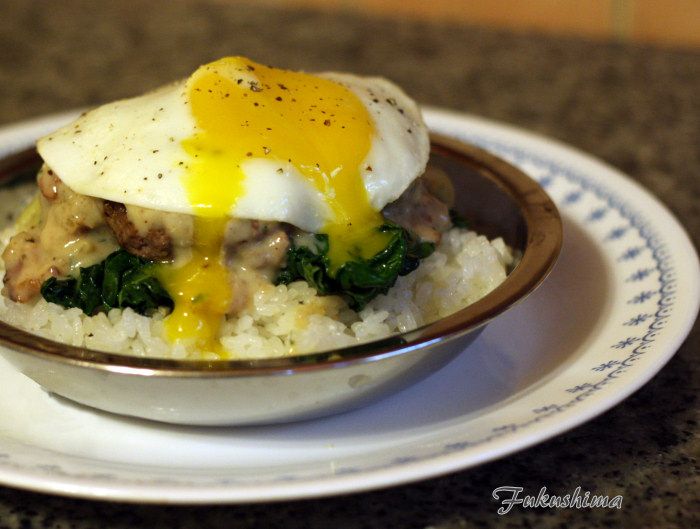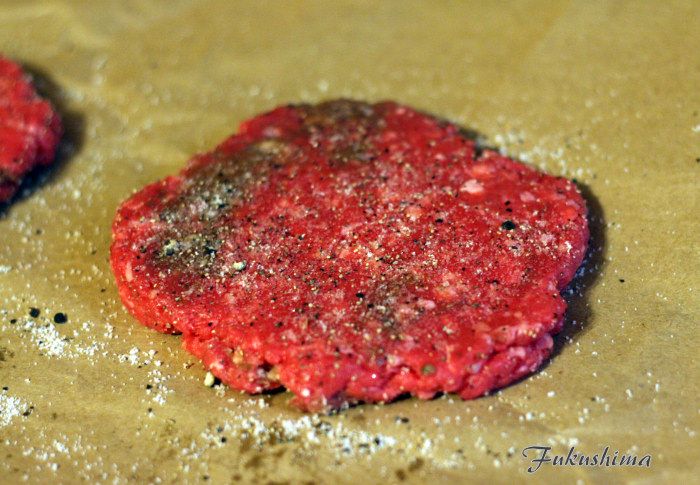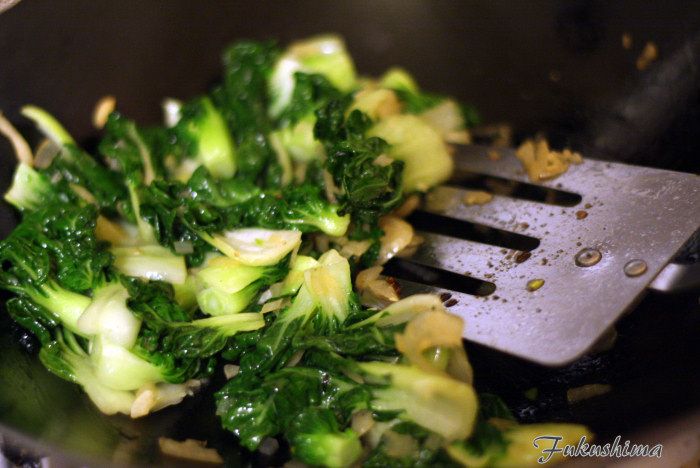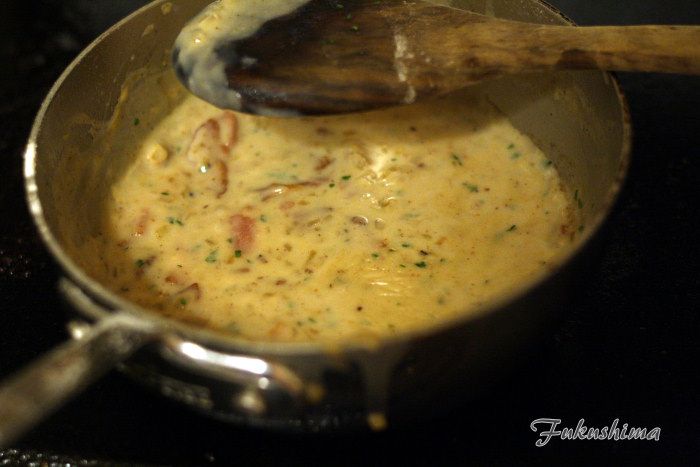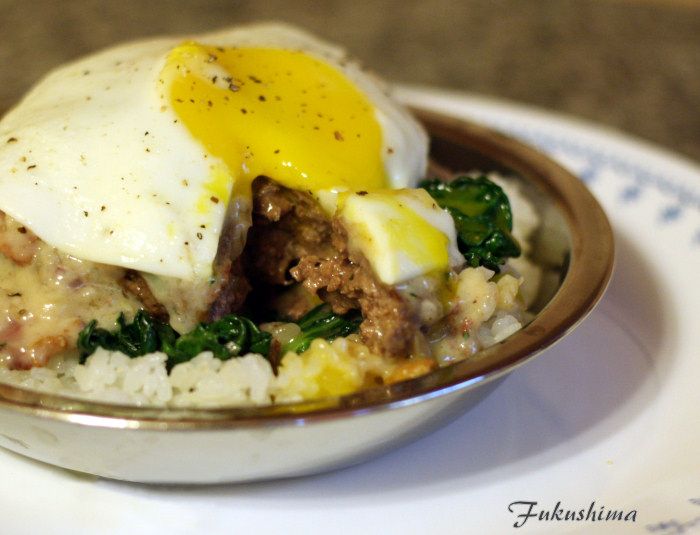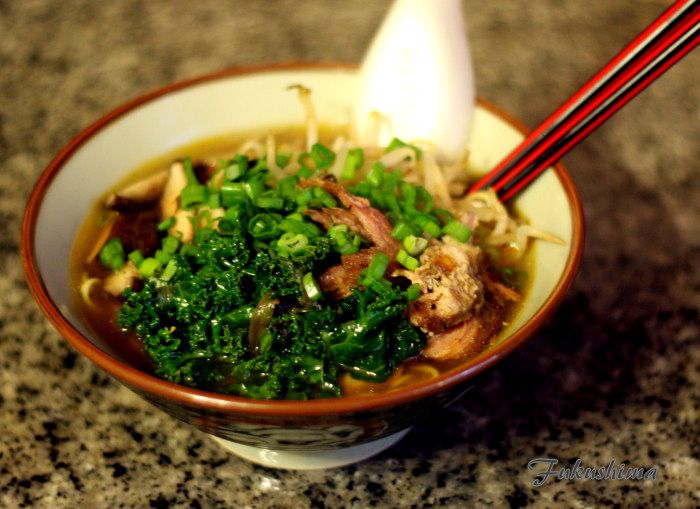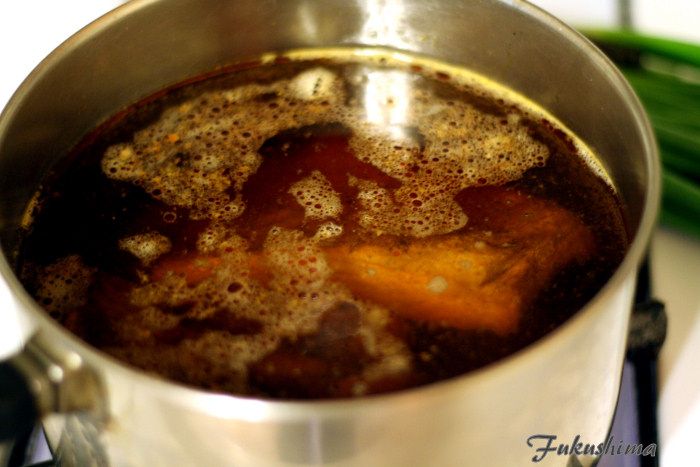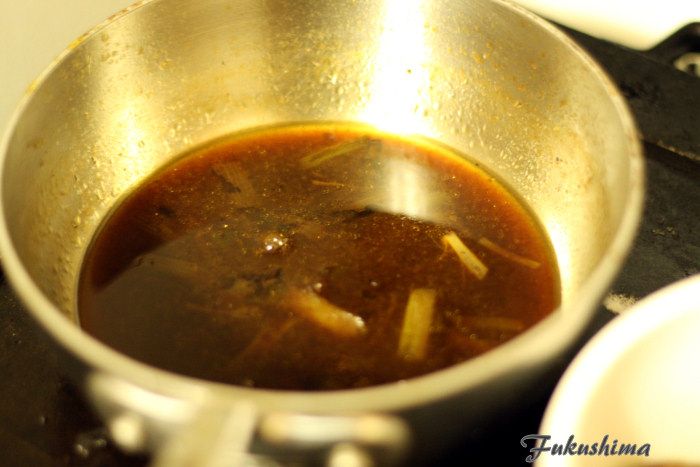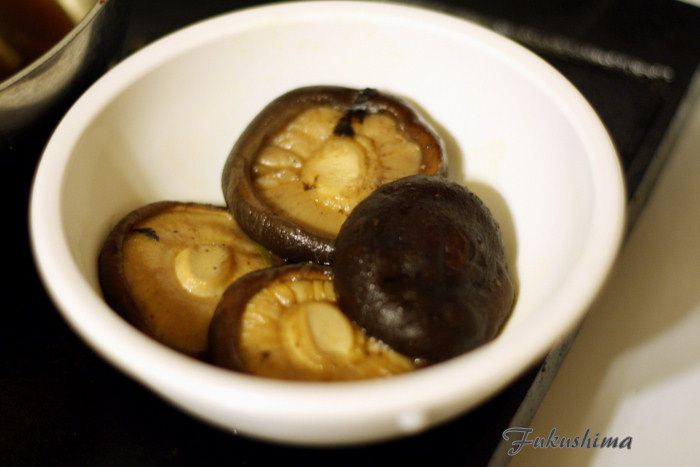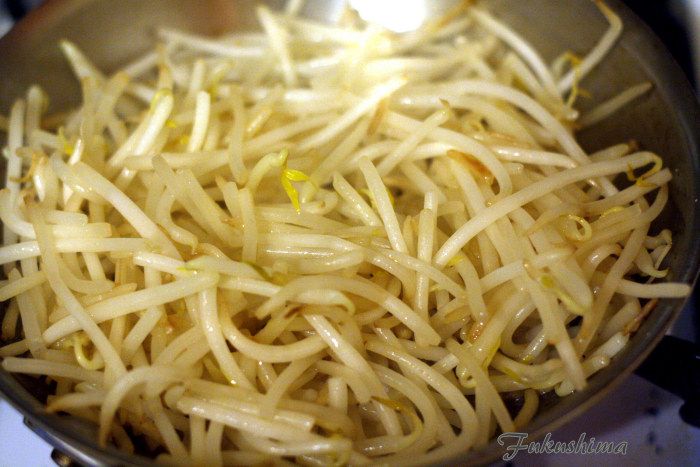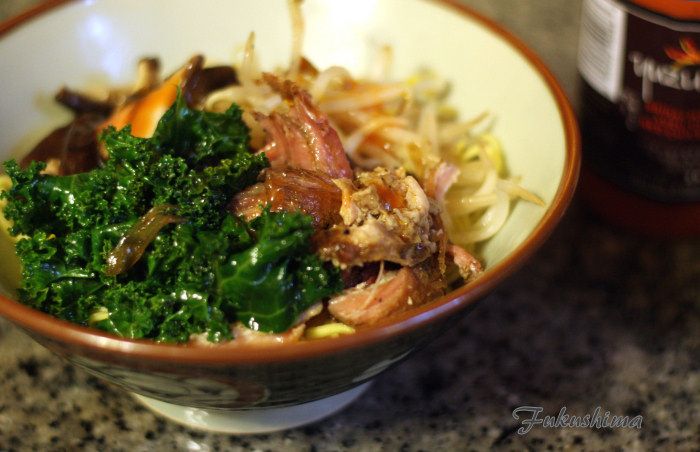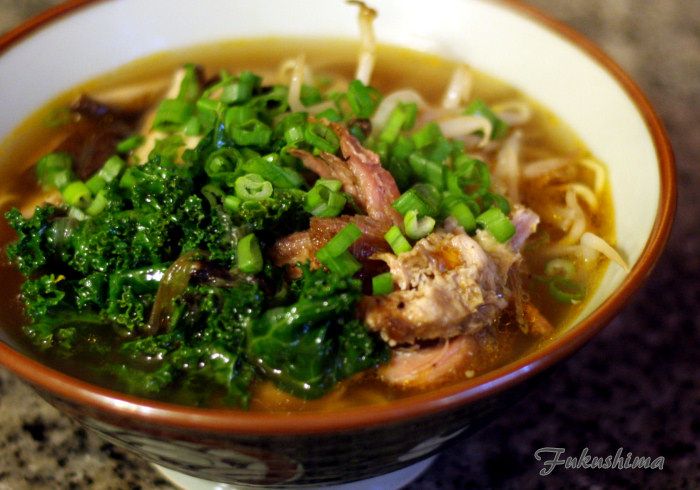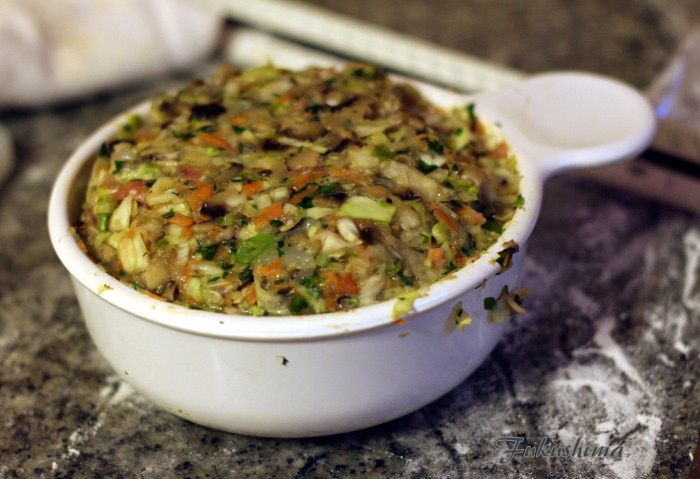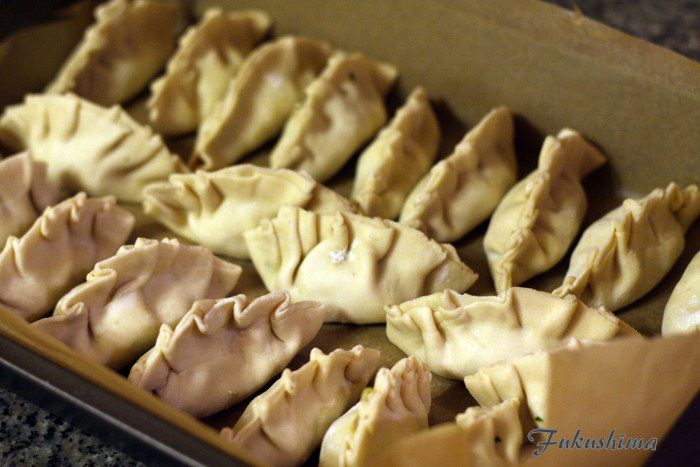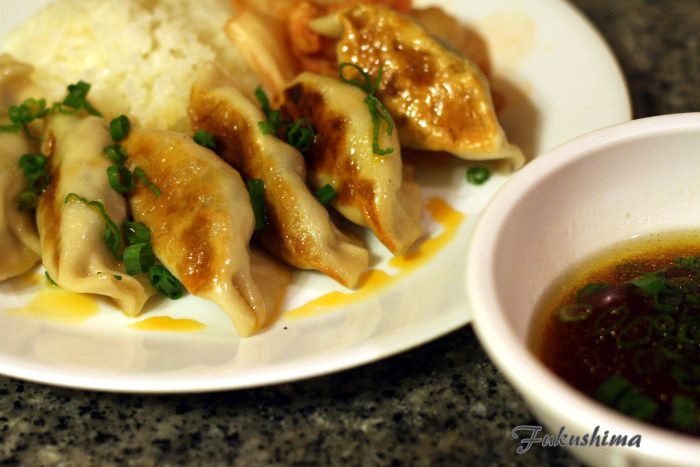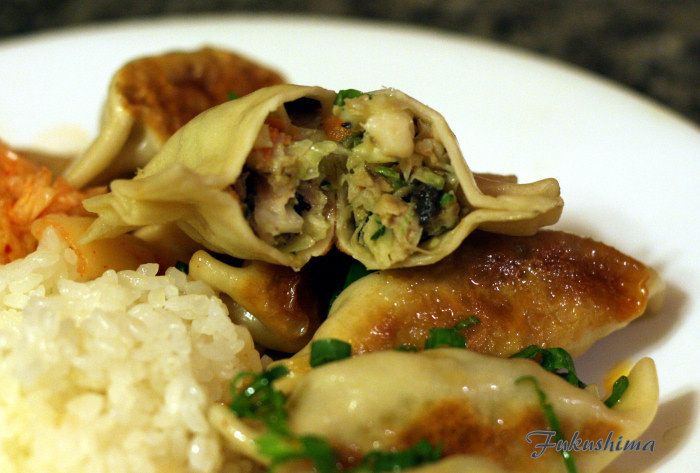So, I decided to make gyoza, that most famous of Japanese dumplings. And to make it more interesting, I decided to make it with home made dumpling skins. I have a couple of recipes, and it could not, on the surface, be any easier. A basic hot water dough and some quick kneading. The dumpling skin is based upon a rather simple Chinese noodle recipe, that involves nothing more than water and flour.
Dumpling Skins:
2 cups all purpose flour + 1/2 cup for dusting and such
1-1/4 cups boiling water
Basically, after boiling the water, I added about 3/4 cup of the water to the 2 cups of flour, mixed this together to form a dough, I found that I needed about 1/4 cup more of the water I had allowed for. Once this came together, and it is a dry dough at this time, I turned it from the bowl and kneaded it for around 4 minutes (this was a mistake). Once this became somewhat smooth and elastic, I divided into halves and wrapped in plastic to rest. After a one hour rest, I rolled each half into a long snake, and evenly cut it into 24 pieces. Here is where I got lazy and gave into the call of my KitchenAid pasta rollers. Each piece was rolled into a ball, given a quick smash by hand them rolled through the machine. I should have gone thinner, more on this later. Here is what I ended up with.
So Far So Good
They are far from perfect, hey, it is my first time. Lessons learned, I over kneaded, the gluten just would not relax, the dough was a little tough. Also, I prefer a thinner skin than these, the problem was that gluten. I think next time, I will knead for maybe 1-2 minutes.
To the stuffing, I originally thought these would be vegetarian, but, once I decided to go with home made skins, I ditched the experimental vegetarian stuffing and went with my usual pork and shrimp dumpling stuffing. Essentially, just a load of veggies, ground pork and finely minced shrimp. I prefer the texture a little loose, so all the vegetables are hand cut.
Dumpling Filling:
1/4 pound ground pork
1/4 pound wild shrimp, finely minced
2 cups chopped cabbage
1/4 cup finely chopped carrot
1/4 cup finely chopped scallion, white parts only
5 medium Shiitake mushrooms, finely chopped
3 tablespoons Mitsuba, Parsley or Cilantro
1-1/2 teaspoons corn starch
2 cups water
3 tablespoons shoyu
2 tablespoons sake
1/2 teaspoon sugar
1 teaspoon Red Boat fish sauce
Mix the cornstarch, pork and shrimp together. Set aside. In a small saucepan, combine liquid ingredients and add mushrooms. Bring to a simmer and simmer for 5 minutes. Remove mushrooms and finely chop for stuffing. Reserve mushroom cooking water. Combine all vegetables, mushrooms and meats, season with 2 tablespoons of the mushroom cooking water that has been reduced by half. Set aside to cool.
Dumpling Filling
From here, the assembly goes painfully slowly if you are me, and it goes quickly if you are one of those dexterous people. You can see that the filling I use is a coarser texture and it not as agglomerated as many commercial versions, I like the texture and the way the flavors are not all mashed together in a food processor. In any event, except for the over-developed gluten and thickness, it was a lot easier to work with fresh wrappers. They folded and sealed much better and once I get the kneading down, this is the way to go. Here they are all in all their rustic, irregular glory.
Into the pool everyone
The process from here, is pretty straightforward as well. I used a very good non-stick pan, I like the Bialetti pans, best non-stick I have found. A little oil to brown the bottoms of the dumplings, then once brown, throw in about 1/4 cup of water and cover to steam.
Browning nicely
I ended up using two pans, and this went pretty quickly. The overall cook went exactly as expected and the dumpling skins cooked up as expected. Despite their obviously excessive thickness. I also think I don't like the folds on my gyoza, won't do that again. Still, it was good food.
Gyoza, Kimchi, Rice and Dip
A nice dipping sauce was assembled using the mushroom cooking water, some vinegar and a little extra sugar, and a dash of sesame oil to add body. Some chopped green onions were added as well. On the plate, you can see I drizzled some Togarashi Rayu oil over the gyoza, I also decided some kimchi and rice was in order. I love the sweet/salty/savory/heat that rolls through the palate with these combinations of foods. The kimchi also brings sour and crunchy to the plate, really hitting all of what we love in food to the plate.
In Section
'Here you can see the thickness, this is actually acceptable for things such as potstickers, but, I prefer a thinner skin for gyoza. Still, the texture was excellent and the flavor was right there. The overall taste was balanced with the vegetables being up front and center, the meat added depth and complexity. Overall, this was delicious, the next batch, I know just where to go.
